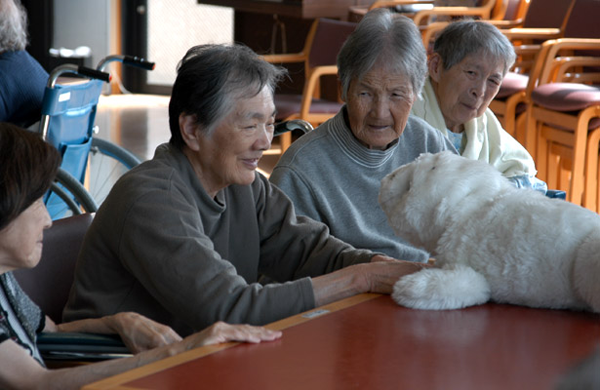Emerging Tech 2013: Robots in Healthcare: Help or Hurt?
 |
| Picture Credit: PARO |
Happy New Year everyone! As you know, I follow Asia/Japan tech trends. I was watching an NHK World journalistic piece on robotic therapy for Dementia using a baby seal called PARO and wanted to investigate this trend more. Interestingly, there is a sizable debate amongst medical professionals and sociologists on whether robots like PARO can replace the human element versus aiding health professionals caring for patients.
Some Background
 |
| Picture Credit: PARO and Toyota Partner Robot |
Robotic assistance is nothing new as we have seen the popular cartoon series, Jetsons, with their robot maid Rosey hilariously humanized. PARO has been around since the early 90s and its generation spurred on toys like "Tickle Me Elmo" or "Furby." The car juggernaut, Toyota, was an automation company before it launched its car business. Toyota Motor Company's Toyota's Partner Robot program promises to comercialize robots in the coming 2013 to provide designed to provide support in nursing and health care like walking assistance, patient transfer, balance assistance and walk training.
The Debate
Health care professionals are in the highest injury-risk categories. According to OSHA, health care professionals have seven times the average incident rate for musculoskeletal disorder (MSD), aka Back Injuries, than freight/dock workers. So, robotic assistance in this area is a no brainer right? Well, the economies of scale has still hampered the robotic industry in this area where it is still out of reach for the average person. Tmsuk, which introduced the Tmsuk-4, six years ago, is still around $100,000. Not even leasing/rental programs at that price tag can be affordable. PARO is also around $5,000.
Another concern, is more sociological. Many articles and reports cite that patients want with feelings and empathy. Is PARO deceiving people into thinking it is real? Is PARO any different than a stuffed animal? Remember Bandai's Tamgotchi or smartpet? There is an effect called the "Tamagotchi Effect" where people are emotionally attached to their machines or in-animate objects.
Still, many patients want human physical contact and interaction. Patients see a nurse's touch as comforting.
Still, many patients want human physical contact and interaction. Patients see a nurse's touch as comforting.
SocialGreg's Uptake
Robots still have a long way to go in terms of human interaction. The baby-boomers are not as computer savvy as the current generation so their interaction with machines still feel un-natural as opposed to children who interact with iPads on a daily basis. So, this may change in the future. The robots best chances for integration is in augmentation not replacement for the healthcare givers.
The many stakeholders in healthcare (robot manufacturers, family members and caregivers; healthcare providers; technology providers; aging or disabled individuals) all have similar goals in improving the quality of life towards the patient: independence, preserve dignity, and empowerment. We just need to figure out how to meet in the middle in 2013 and beyond.

Comments
Palliative care, with its emphasis on providing comfort and support to individuals facing serious illnesses, has witnessed remarkable advancements with the assistance of robots. These machines can offer companionship, help with basic tasks, and even provide medication reminders, which can greatly enhance the quality of life for patients in palliative care."